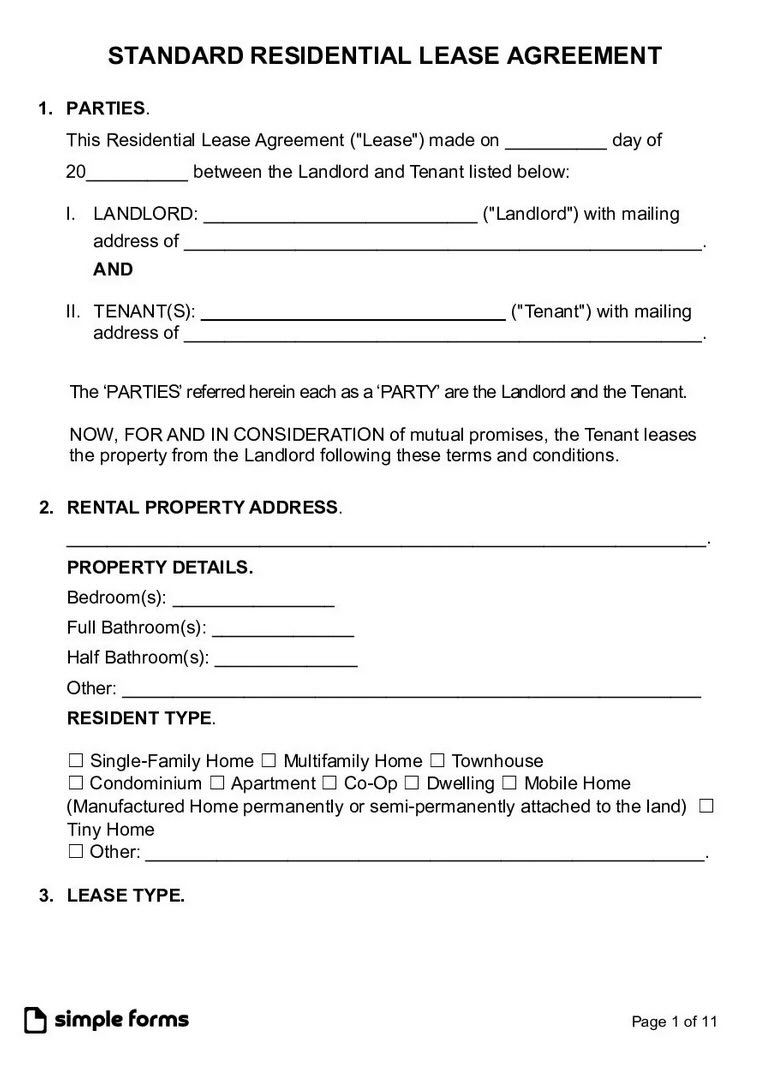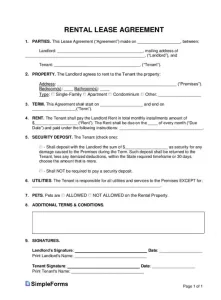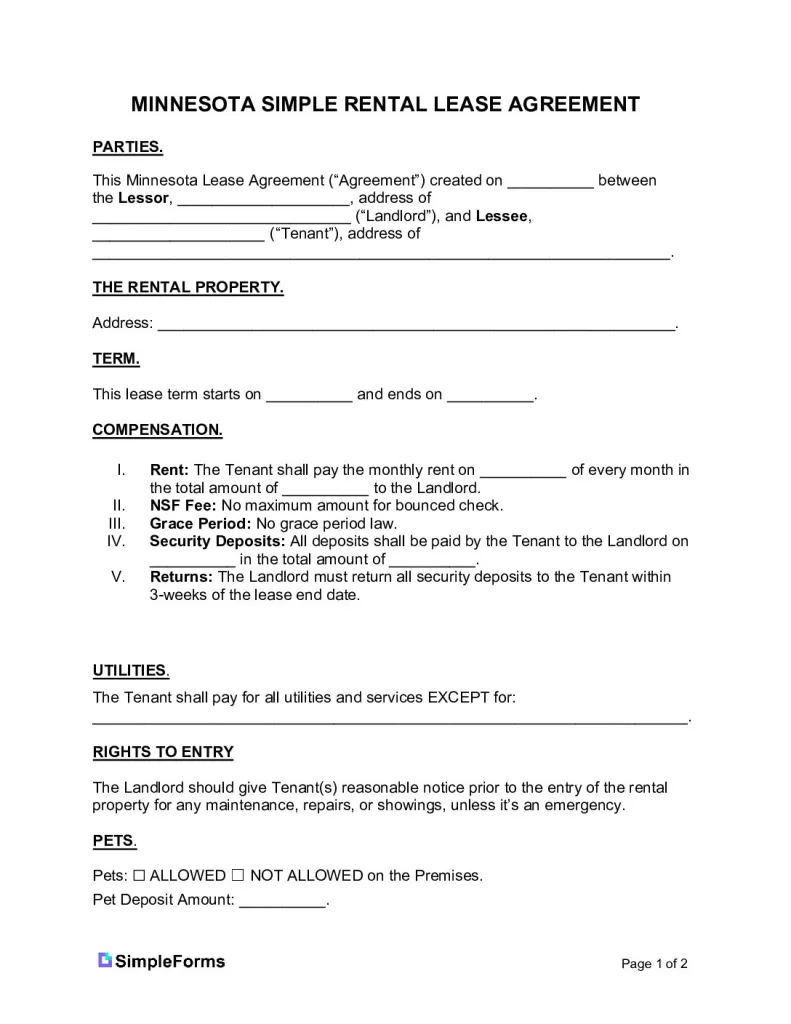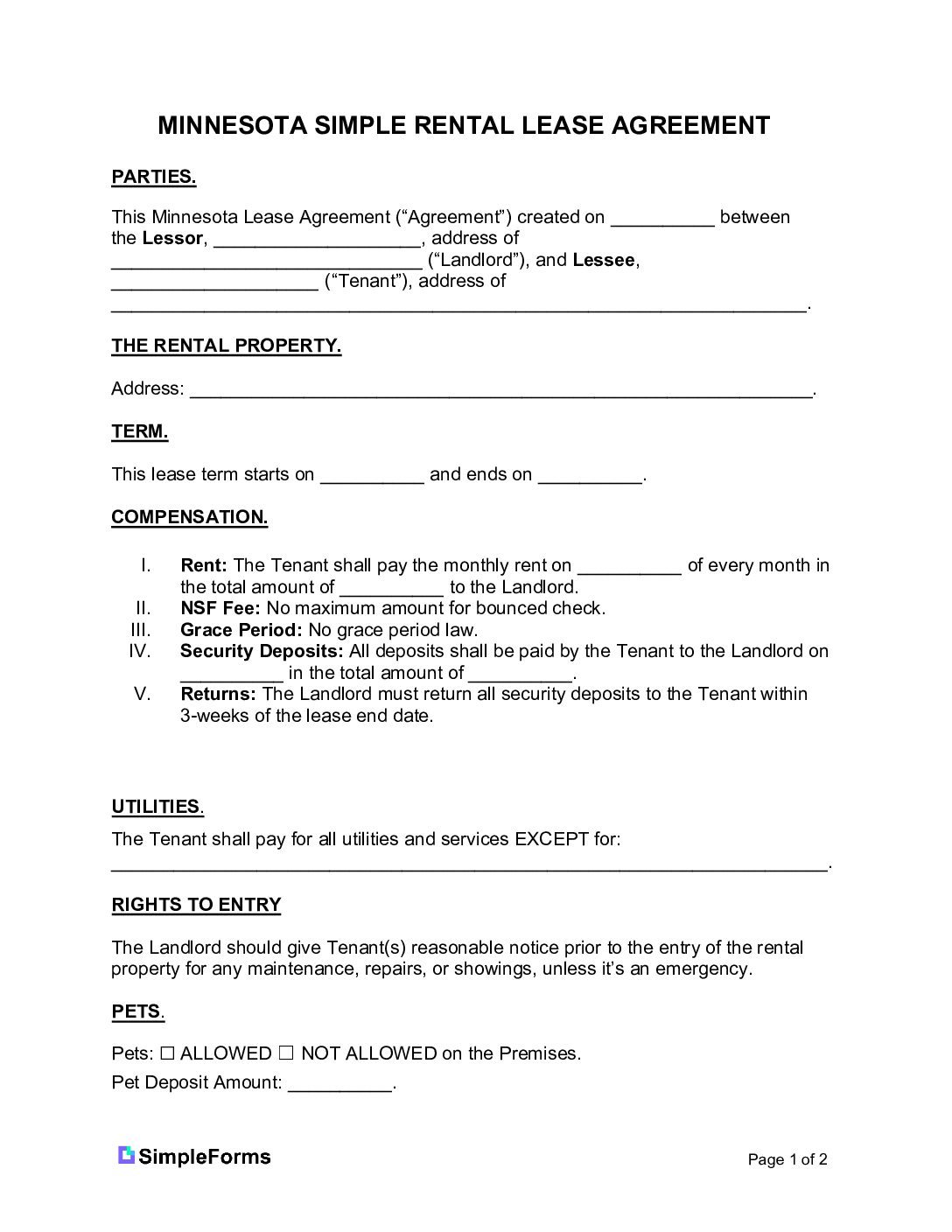A Minnesota rental agreement is a legally binding document that outlines the terms of a rental arrangement between a landlord and a tenant. It covers rent, fees, deposits, utilities, and responsibilities.
Options By Type
 Standard Residential Lease Agreement Standard Residential Lease Agreement
Download: PDF |
 Simple (1-Page) Lease Agreement Simple (1-Page) Lease Agreement
Download: PDF |
Most Recent US Home Facts
- Population (2023): 334,914,895
- Median Households (2022): 125,736,353
- Median Household Income (2022): $75,149
- Owner-occupied Households (2022): 64.8%
Source: U.S. Census Bureau
Required Disclosures (6)
- Covenant of Landlord and Tenant Not to Allow Unlawful Activities
- Financial Distress
- Landlord/Manager Information
- Lead-Based Paint Disclosure Form
- Outstanding Inspection Orders
- Disclosure of Fees
Security Deposit
Maximum Amount – Landlords can charge any amount as Minnesota does not mandate the maximum amount Landlords can request from Tenants.
Returning to Tenant – Landlords must return the tenant’s security deposit within three (3) weeks of the lease end date.
Source: § 504B.178
Landlord Access
General Access – Landlords must provide reasonable notice before entering leased property.
Emergency Access – Landlords can access the rental units in an emergency.
Source: § 504B.211
Paying Rent
Grace Period – There is no specific law governing the due date for rent payment. As a result, the lease agreement dictates the due date, with no grace period provided.
Maximum Late Fee – The maximum late fee can be up to 8% of one (1) months rent.
NSF fee – No law in Minnesota on how much Landlords can charge for a bounced rent check.
Source: § 504B.177

